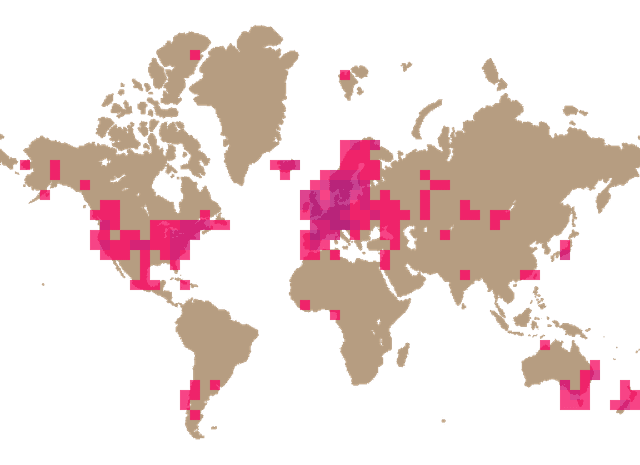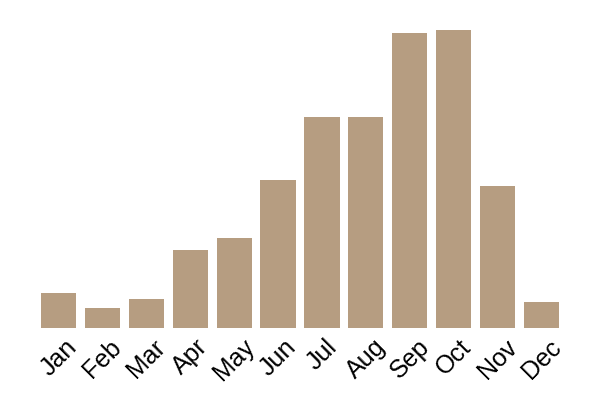A good edible mushroom, widely distributed primarily in the Northern Hemisphere. It begins fruiting from early spring and continues until late autumn. One of the largest members of the Agaricus genus – the cap of a mature fruiting body can exceed the size of a person's palm in diameter. However, caution is advised as there are look-alike species, including deadly poisonous ones.
The cap is initially convex, bell-shaped, or domed, then expands and becomes flatter, sometimes with a shallow, broad depression. It ranges in diameter from 10 to 25 centimeters (4-9 inches). The surface is fibrillose, with a slight tendency to form small scales. Its color is white, yellowing with age.
The gills are crowded, close, free from stalk. White at first, then pinkish, brown, and finally dark-brown, almost black, sometimes with a purple tint.
The stem is firm, cylindrical, straight, or slightly thickened at the base. Height ranges from 8 to 10 cm (3-4 inches). The surface is white, smooth or fibrous. With age, the core may become fluffy or hollow.
The flesh is thick, white, with a slightly pinkish-gray hue above young gills. It darkens with age.
The ring is double; the upper part is formed by remnants of the partial veil protecting the young gills, while the lower part consists of remnants of the universal veil. The lower, or outer, part of the ring is thicker, fluffy, may have scales, and often cracks radially. Older fruiting bodies may not have a ring, or will have only shreds.
They can grow individually, but more often in groups, sometimes in rings. They tend to reappear annually in the same places.
The spore print is chocolate-brown, with a hint of gray or reddish tint.
This fungus thrives in soil, favoring grassy habitats like fields, pastures, and lawns. It's well-adapted to human-altered environments and commonly found in urban landscapes, including parks, pathways, and barren, compacted areas. Known for its knack for breaking through asphalt and displacing sidewalk tiles as its fruiting bodies grow. Widespread.
Pleasant, often characterized by anise notes, which can serve as an additional identifying feature. In America, the scent of anise is less common. Additionally, some have noted that the flesh of the mushroom has an almond-like odour.
Great edible mushroom, requires culinary processing before consumption. Older fruiting bodies may darken the dish.
When collecting, caution is advised as this mushroom can accumulate high concentrations of cadmium, which is toxic to the body. Avoid gathering mushrooms near industrial areas, major roads, landfills, or fields treated with phosphate fertilizers.
A common ruderal species of mushrooms, often fruiting within urban areas; this species is mildly poisonous.
The surface of the Yellow stainer quickly turns yellow when bruised or damaged. Any yellow spots on the Horse mushroom are less bright and may appear as the fruiting body ages.
Yellow stainer smells of ink, phenol, hospitals or iodine. The scent of the Horse mushroom is pleasant, sometimes featuring notes of anise or almonds.
Amanita virosa is a deadly poisonous mushroom that can resemble both the Horse mushroom and other species of the Agaricus genus, especially in its early stages. Fortunately, there are several reliable features to distinguish them, not only specifically for Amanita virosa but also for other equally dangerous species of the Amanita genus.
The gills of Amanita mushrooms stay white, or may turn creamy or yellowish if the fruiting body is already old; however, it is still a close to white color. Whereas the gills of Agaricus species may be white only at very early stages and gradually turn pink, brown, and almost black over time. Additionally, they are generally more densely packed than those of Amanita.
All members of the Amanita genus have a volva at the base of the stem, which Agaricus species never have. Care should be taken, as the volva can be hidden underground and not always visible; at the same time, Agaricus can have a thickening at the base of the stem that might be mistaken for a volva. If in doubt, examine the structure more closely and make a cut (do not use the same knife later for cutting edible mushrooms).
- Hard, M.E. (2010) The mushroom, edible and otherwise its habitat and its time of growth. To be supplied: Project Gutenberg.
- Jordan, P. (2012) The Mushroom Guide and Identifier: The Ultimate Guide to identifying, picking and using mushrooms. Leicestershire: Hermes House, an imprint of Anness Publishing Ltd.
- Laessøe, T. (2013) Mushrooms: How to identify and gather wild mushrooms and other fungi. New York: DK.
- McIlvaine, C., Macadam, R.K. and Millsquash, C.F. (1912) Toadstools, mushrooms, fungi, edible and poisonous and one thousand American fungi. Indianapolis: The Bobbs-Merrill Company.
- McKnight, K.H. and McKnight, V.B. (1987) A field guide to Mushrooms of North America. Boston: Houghton Mifflin.
- Your 2,300-page wildlife window on the World Wide Web (no date) Wildflowers, wild orchids, fungi, wildlife; nature books, reserves. Available at: https://www.first-nature.com/index.php (Accessed: 26 June 2024).

